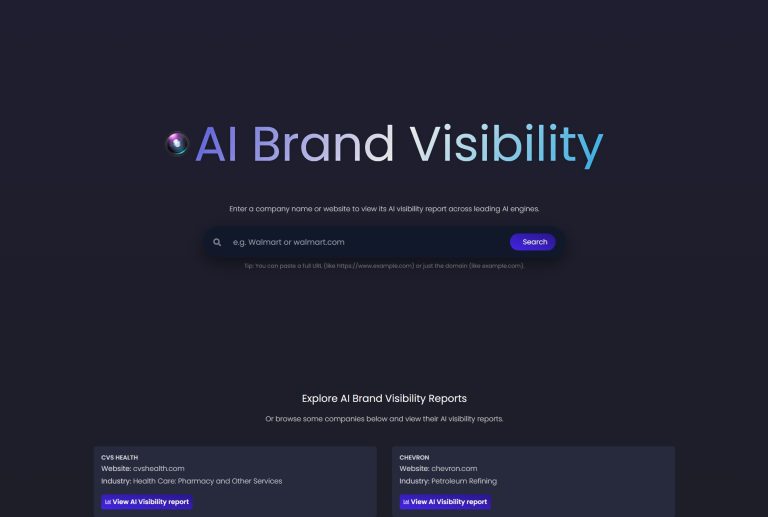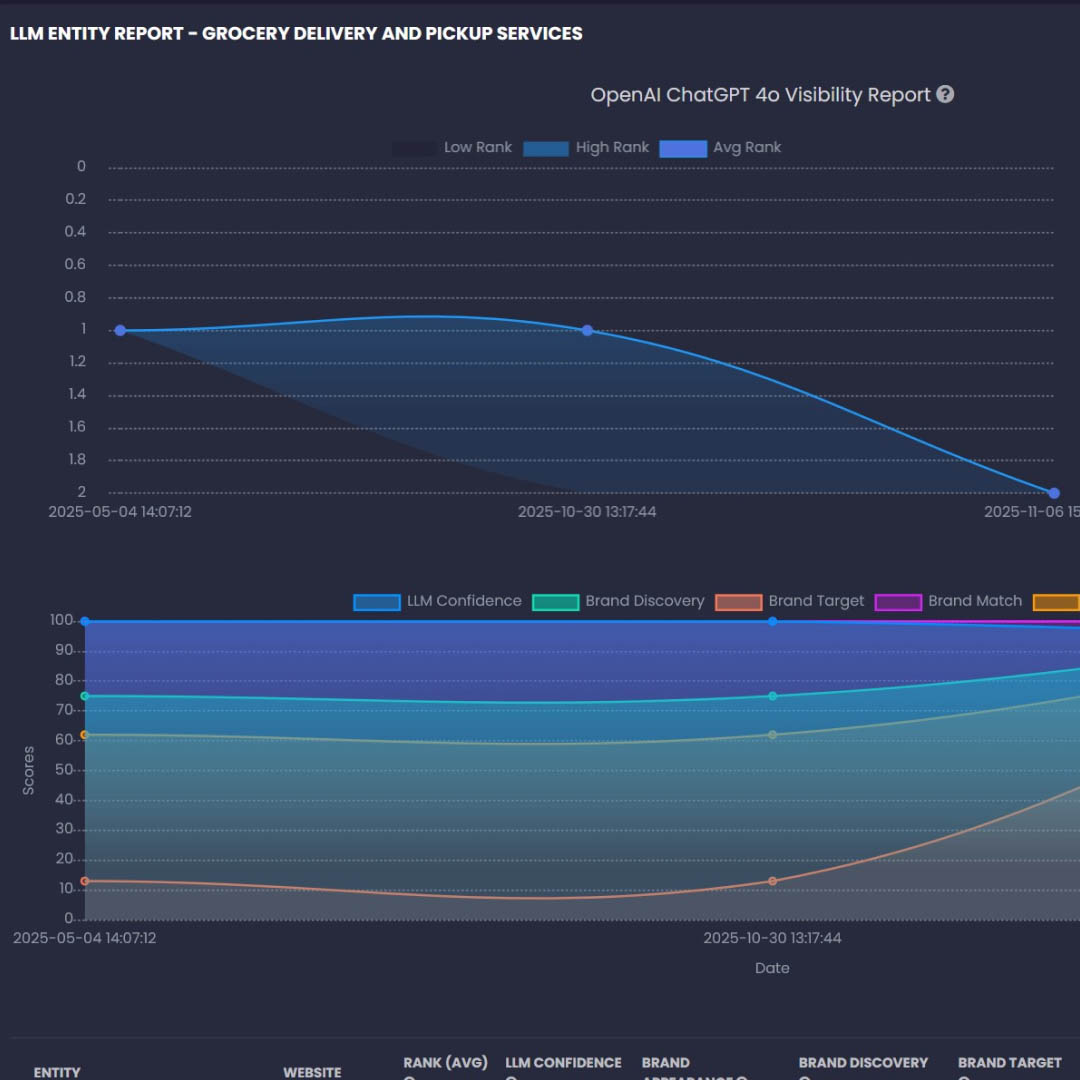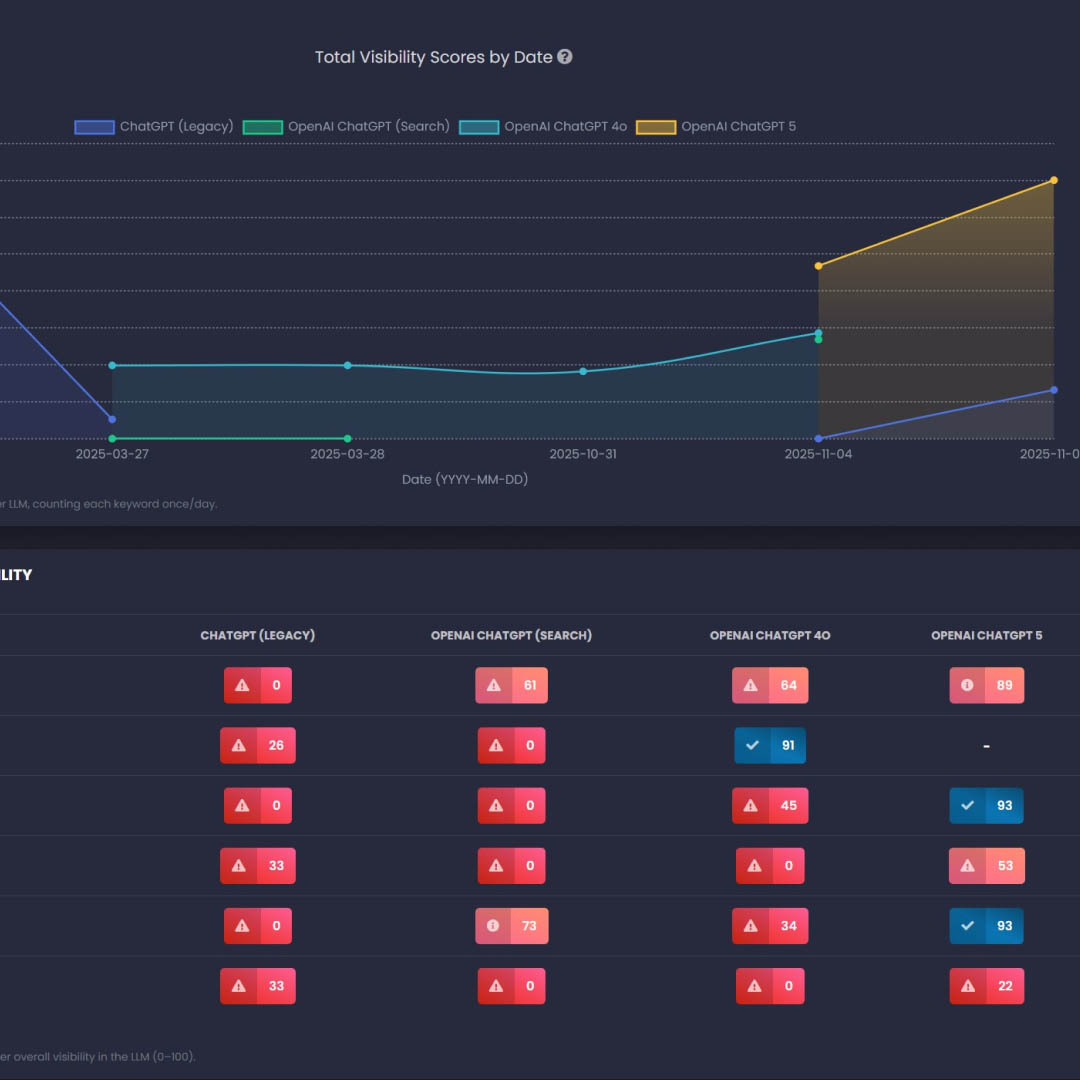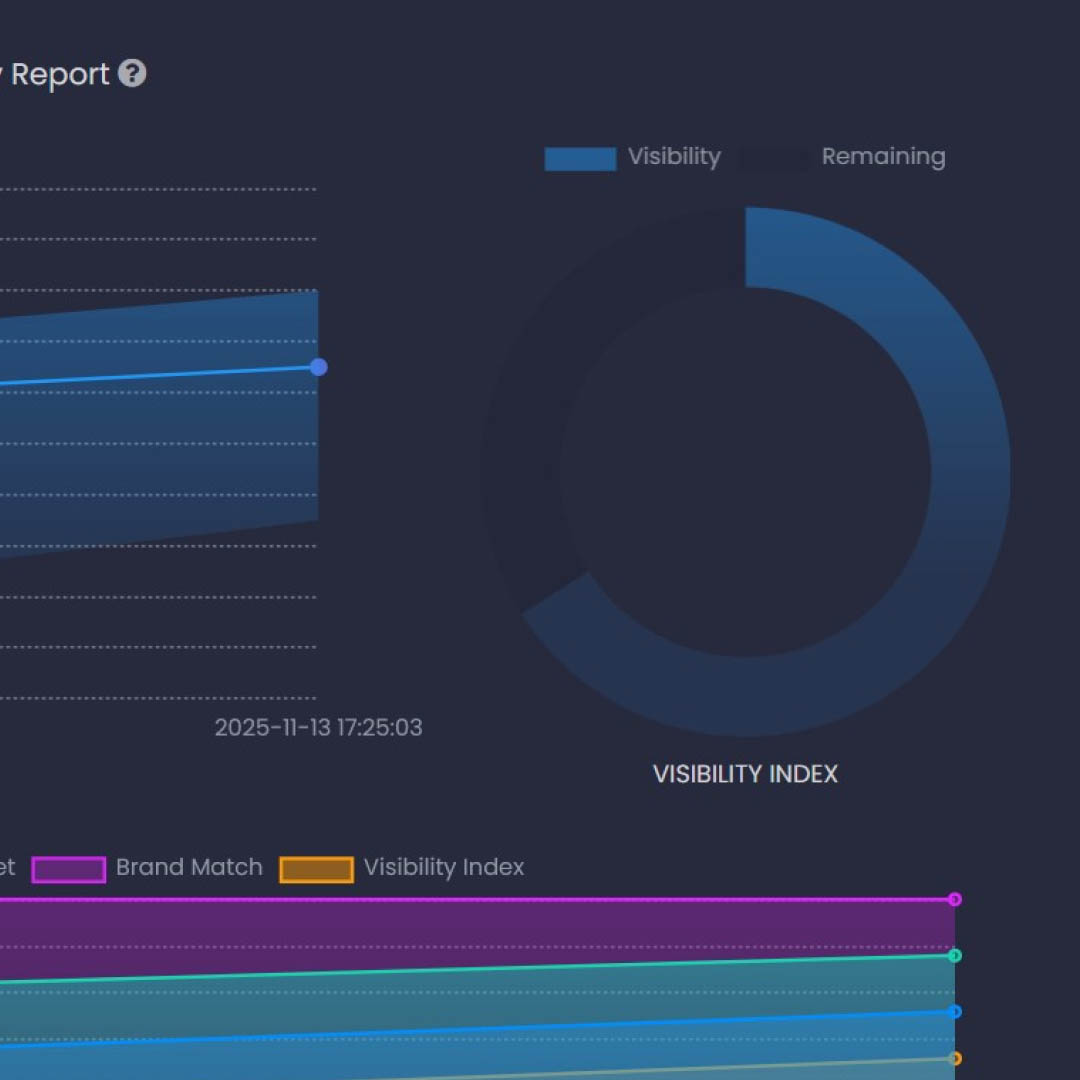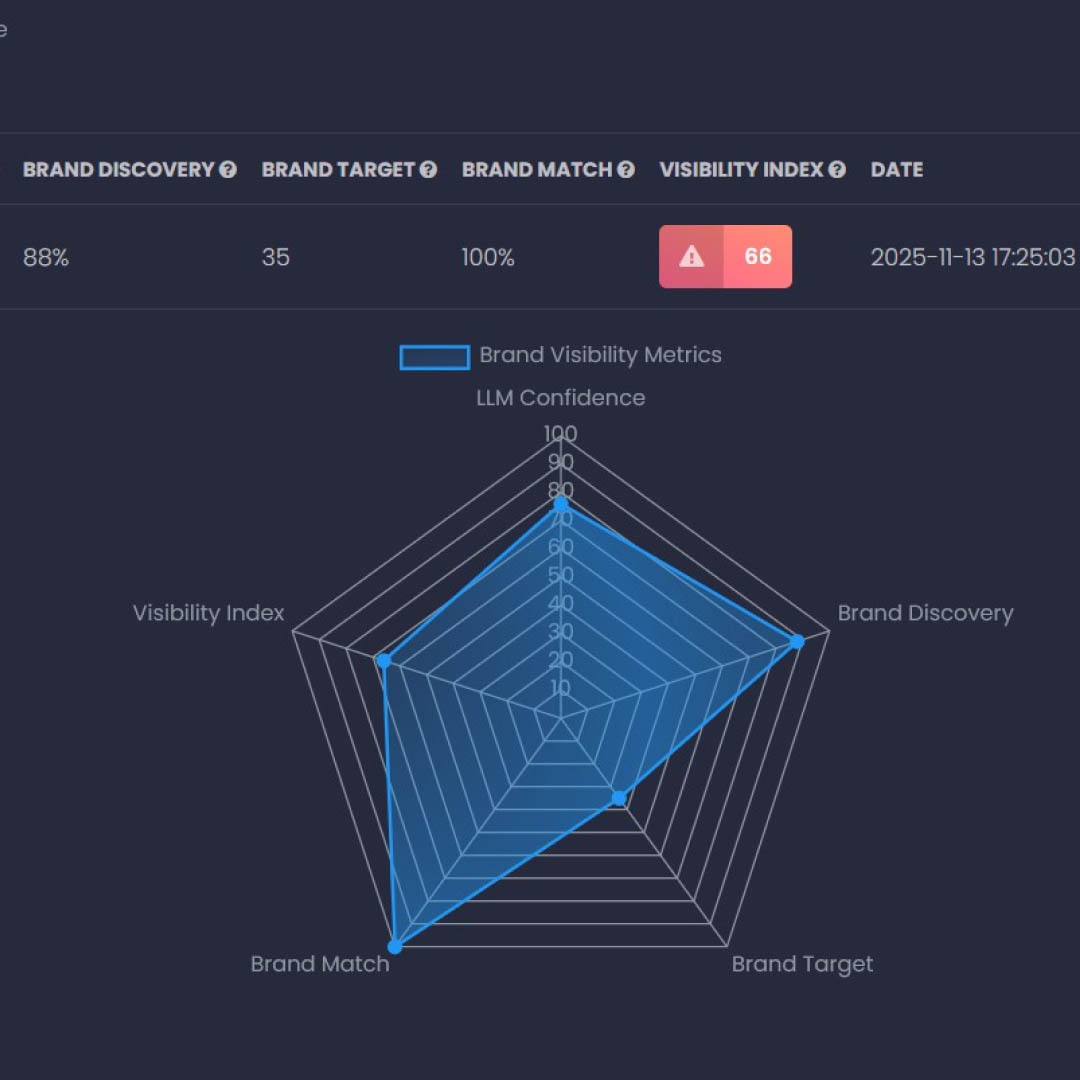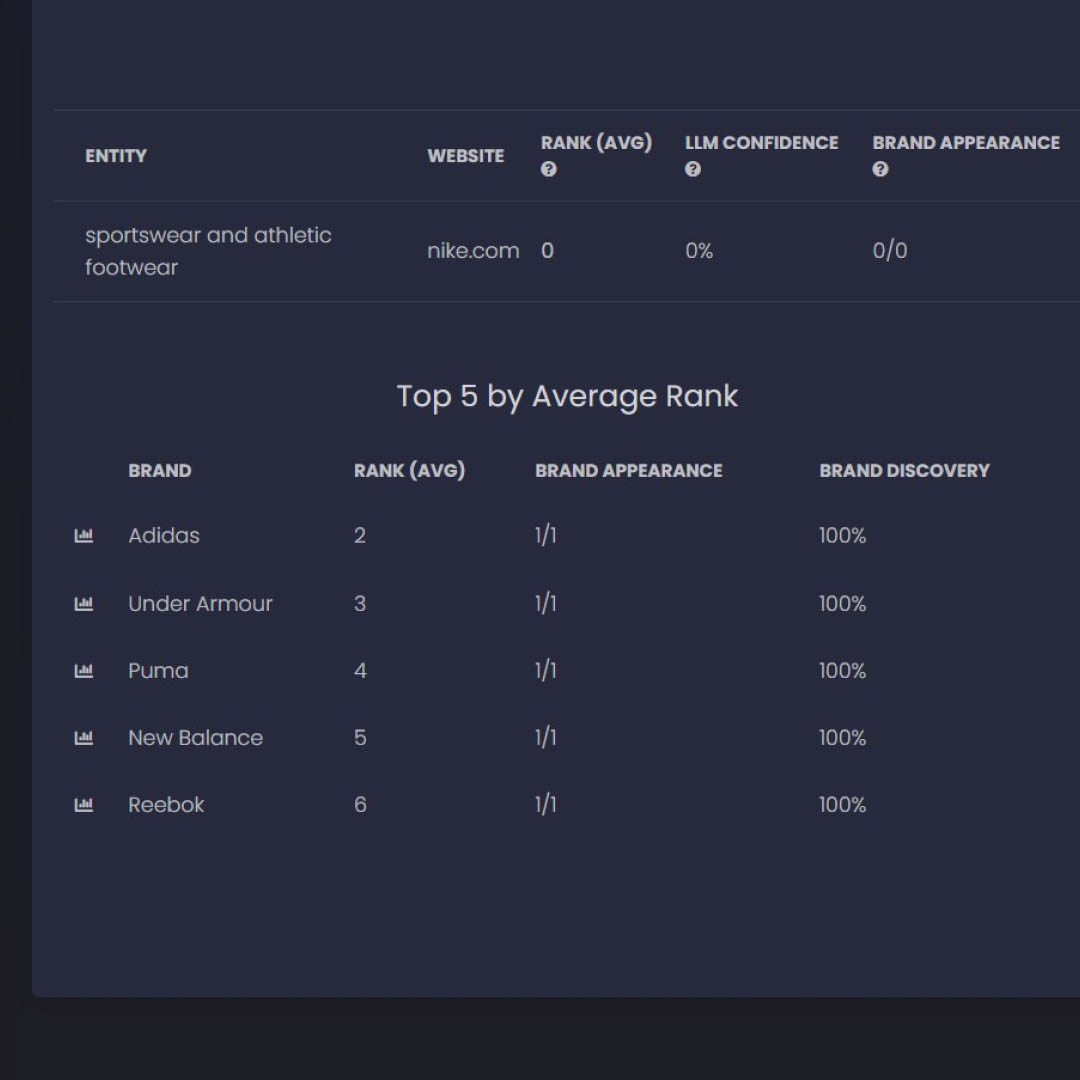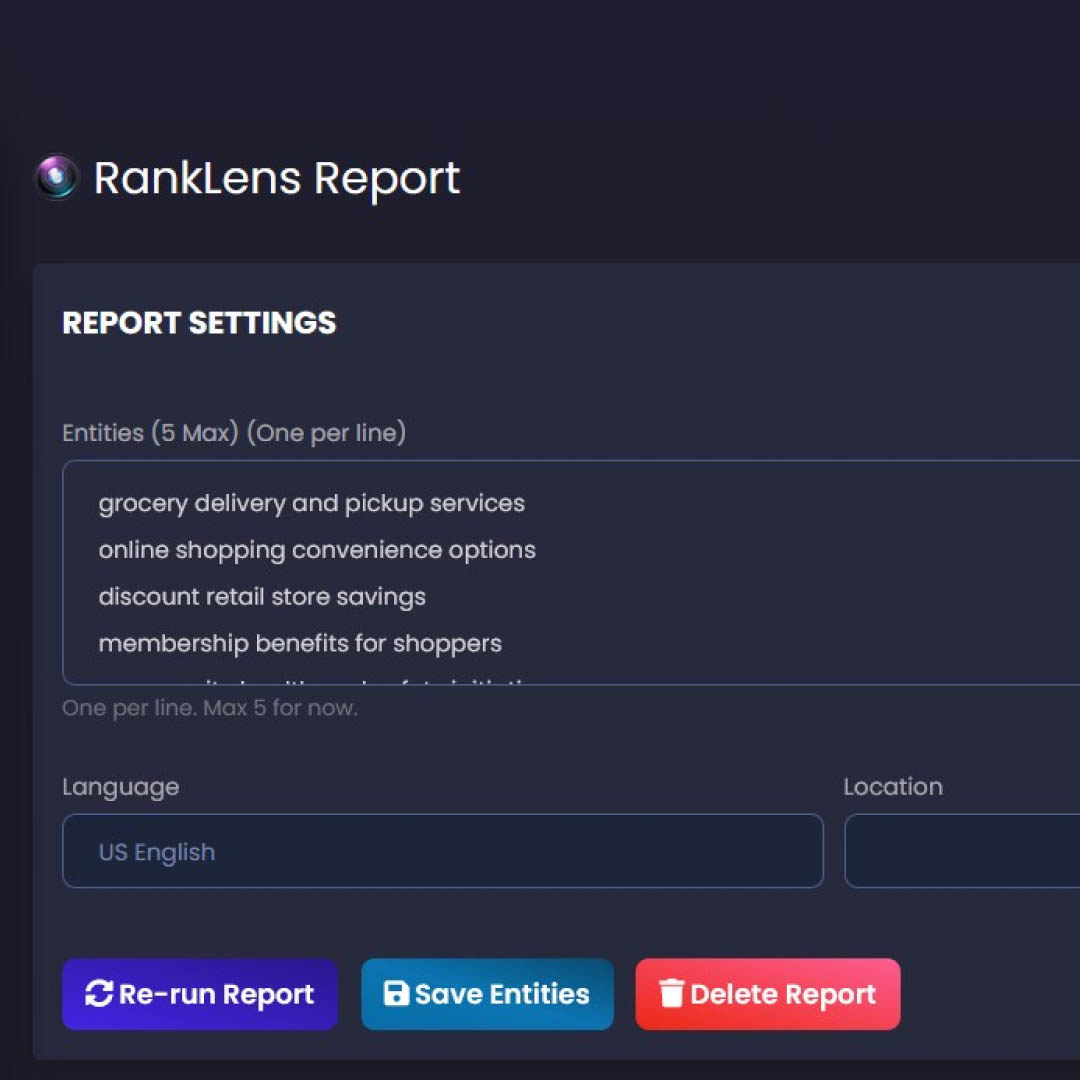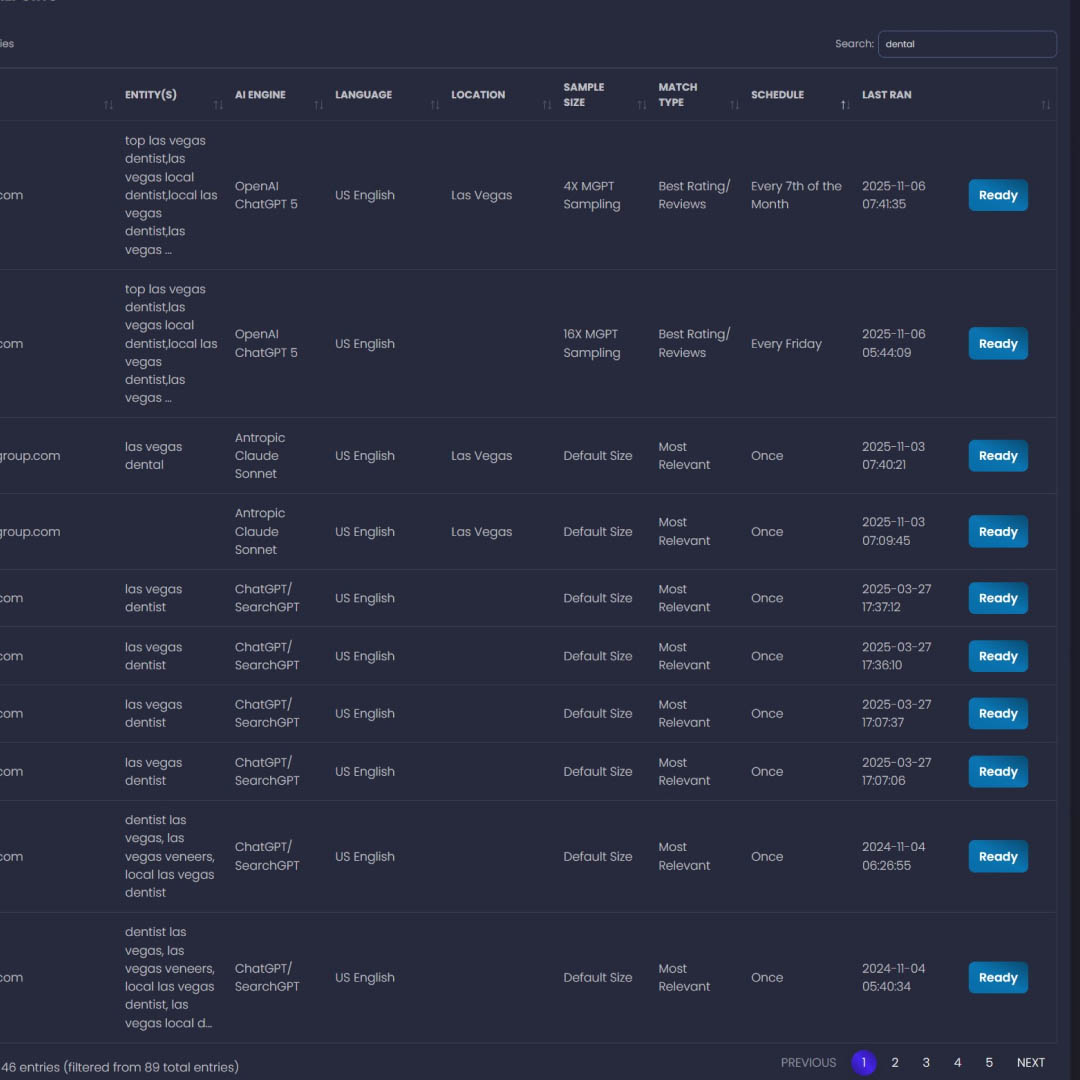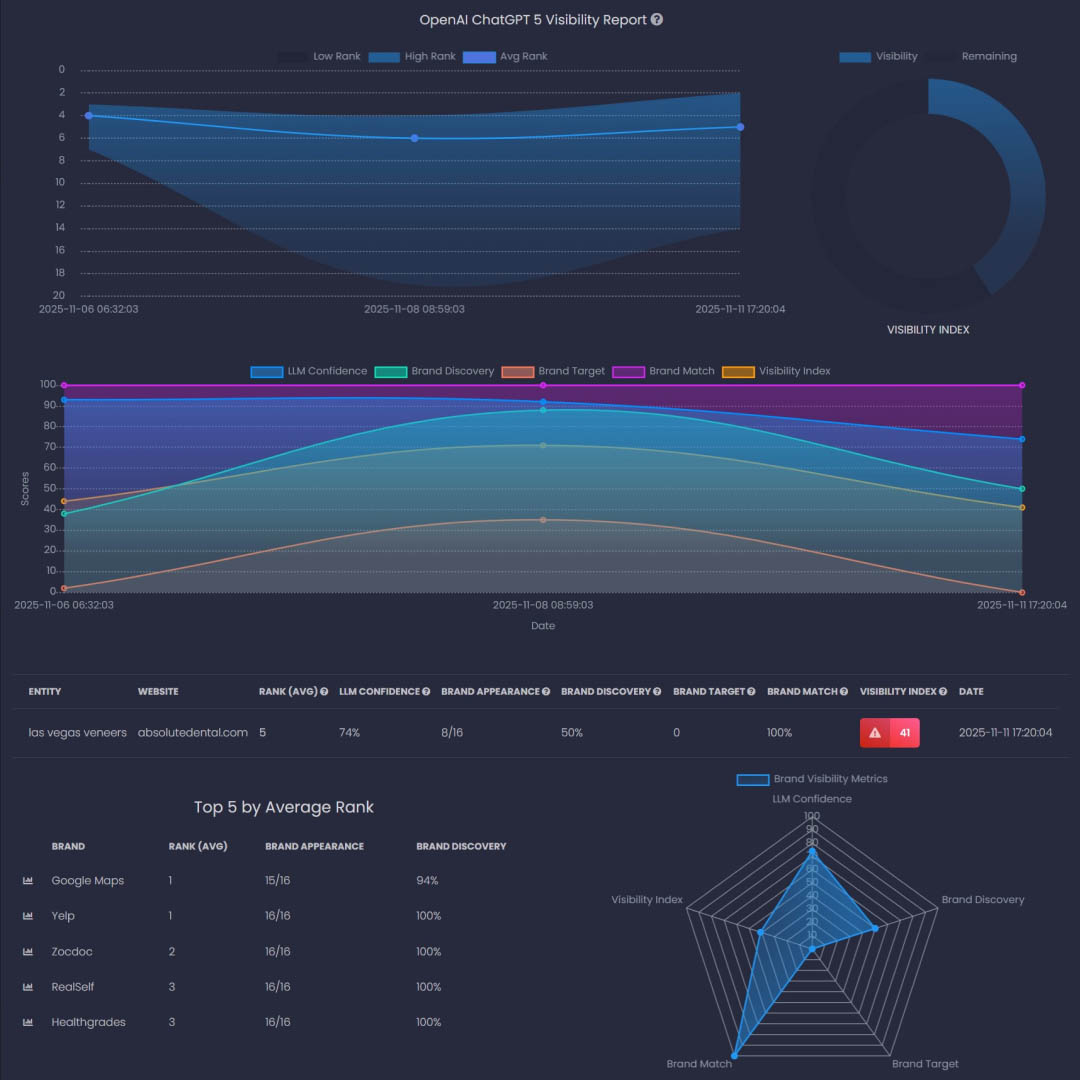
See What AI Really Says About Your Brand
-
Measure Brand Match, Brand Target, Brand Discovery, and LLM Confidence in one view.
-
Instantly see if AI truly understands your brand or mixes you up with competitors.
Understand Share of Voice in AI Answers
-
See how often AI recommends your brand vs competitors for key intents.
-
Use Brand Discovery to quantify your real Share of Voice in AI answers.
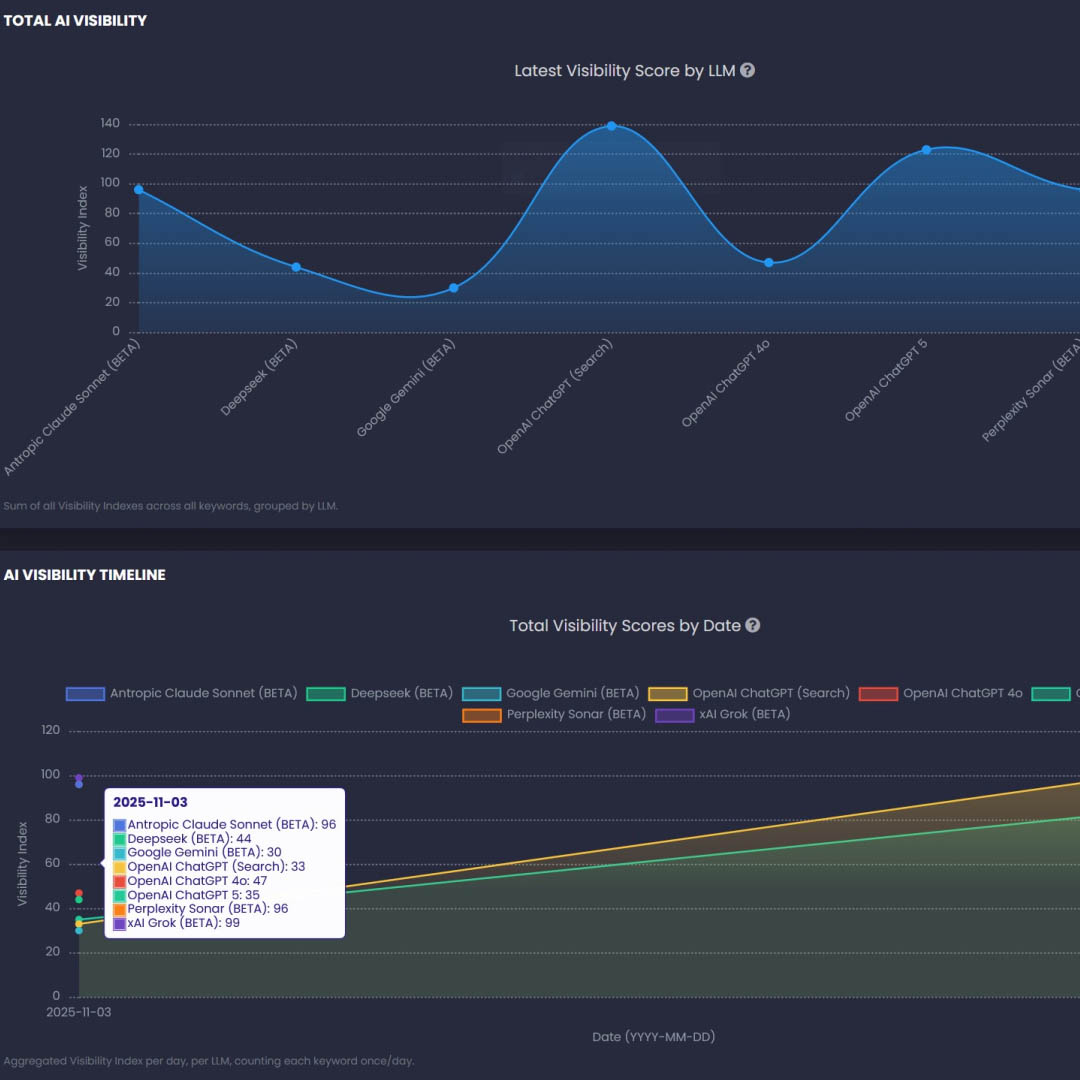
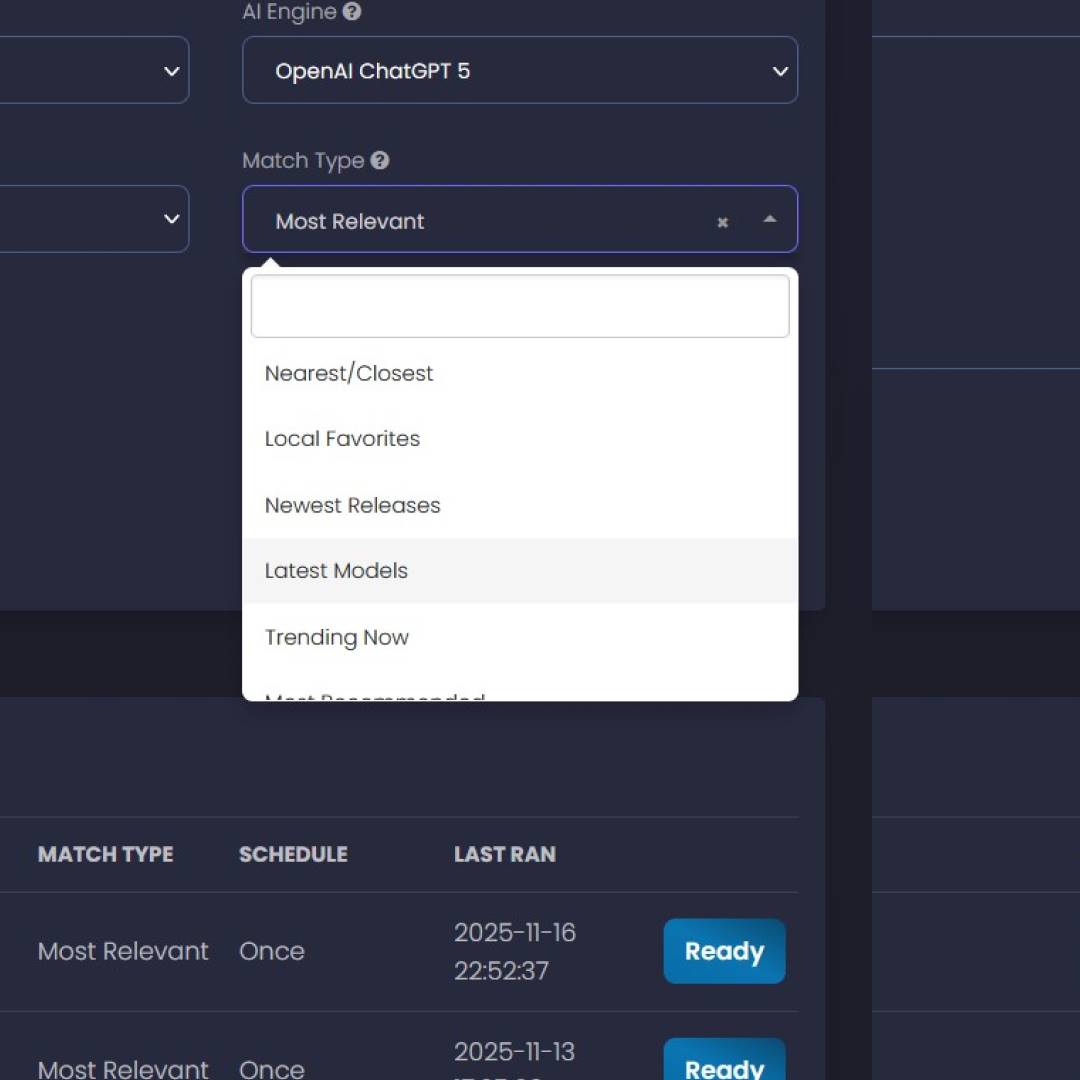
Match Intents That Fit Your Niche and Offers
-
Use 200+ match types (Fastest Delivery, Ethical Sourcing, Local Pickup, etc.).
-
Align AI visibility with what actually matters to each client’s positioning.
Create a Free Account to Access RankLens
RankLens is now fully LIVE, available to everyone. Create a FREE account to check your brand visibility!
Frequently Asked Questions
RankLens is an AI-visibility tracker that shows how often and how confidently ChatGPT-style bots mention and recommend your brand, websites, and competitors.
Traditional rank trackers measure where you appear in Google’s search results.
RankLens measures where you appear inside AI conversations, for example:
-
When people ask “What’s the best [service/product] in [location]?”
-
Whether your brand is named, suggested, or ignored.
-
How often competitors are recommended instead of you.
RankLens looks at several signals, then combines them into a single Visibility Index:
-
Brand Match – How often your exact brand/website shows up when it should along with the Rank (Avg/High/Low) of the match, which is the order recommendations are mentioned.
-
Brand Target – How well AI responds when users clearly want you (branded or navigational queries).
-
Brand Discovery (Share of Voice) – How often you’re recommended in “best X” or “who should I use” queries versus competitors.
-
LLM Confidence – How strongly the AI seems to prefer or recommend your brand over other
RankLens is built to track multiple ChatGPT models and AI engines (for example: core ChatGPT models, search/assistant modes, and new engines as they’re added). It also measures SearchGPT, Perplexity, Gemini, Anthropic, Grok, DeepSeek, Llama and more.
-
You see per-engine visibility (e.g., ChatGPT 4o vs another mode).
-
Engine columns only appear if data exists for that engine, so reports stay clean.
-
The system is designed to add new engines (and new model iterations) over time without breaking existing reports.
RankLens works by modeling realistic entity-probes and reading the AI’s responses, not by hacking, unrealistic prompts, or scraping anything private.
-
Uses structured, repeatable prompts that model real searcher intent.
-
Samples multiple conversations to reduce randomness.
-
Stores results in your own reports for trend tracking and export.
AI is probabilistic, so a single answer isn’t enough. RankLens tackles this by:
-
Running multiple samples per query (e.g., 16× MGPT sampling in PRO Beta, with higher sampling planned).
-
Normalizing and aggregating results into a Visibility Index and ranking averages that’s more stable than one-off tests.
-
Letting you compare month-over-month or week-over-week trends, in additional to ad-hoc snapshots.
RankLens is designed primarily for:
-
SEO & digital marketing agencies needing AI-visibility reports for many clients.
-
In-house marketing teams that want to keep score on their brand vs competitors in AI.
-
Founders and CMOs who want a simple “Are we winning in AI?” KPI.
RankLens gives agencies tangible AI-era proof:
-
Show before/after visibility when you launch campaigns or make content changes.
-
Highlight competitor gains or losses to justify strategy shifts.
-
Export data to PDF/CSV and plug results into your own dashboards or white-label reports.
Setup is intentionally simple:
-
Add your project/site and core brands/domains/entities/locations.
-
Choose the entities/intents you care about (e.g., category terms, local queries, brand terms) or use Insight Igniter AI to help with sub-topics and entity breakouts..
-
Run a report; RankLens fetches AI responses and builds your time charts + engine visibility tables automatically.
Yes—during Beta, RankLens offers PRO mode for free, which currently includes:
-
Higher sampling (16× MGPT) for more accurate visibility scores (with larger sampling planned).
-
Time-series graphs that are backward-compatible with existing reports.
-
Access to new features like search modes (brands, websites, entities, locations) as they roll out .



